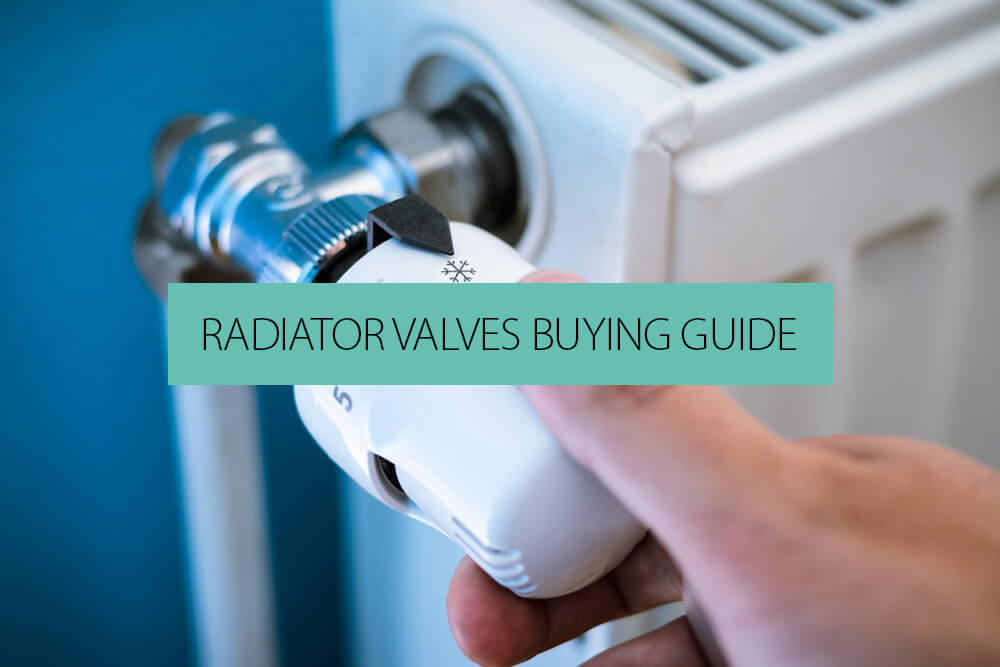
Along with central heating radiators, the valves are an integral part of any central heating system. By having valves built in, the user can switch off one or more radiators at any time. This is particularly useful in warmer months when radiators are not in use and do not require water to heat them. This also allows essential maintenance to take place. Repairs can be carried out without the risk of water flying out of the pipes at the time of repair.
Types of Valves
There are several different types of valves available, each serving a very distinct purpose.
Manual Valves

Effectively a 'tap' for your radiator. The level of water required can be adjusted by turning the valve by hand. These are the most basic and inexpensive of all the valves. These are tried and tested model that has worked for decades. These valves allow the user to select their preferred heat level with a simple tweak, with full control over the heat coming into the radiator.
Thermostatic Radiator Valves (TRV's)

These are a more complex type of valve than a straight manual type. They operate in the same way as a manual valve and control water coming into the radiator. However, unlike a manual valve, a TVR can detect the temperature in the room and self-regulate. As the name suggests, it is thermostatically controlled and requires less human input. The benefit of a TVR over a traditional valve is that it is aimed towards maximum efficiency in energy consumption and cost. Its ability to constantly change and alter the inward flow of heat means that the central heating radiators are always working at an optimal level and saving the user money and time.
Lockshield Valves

A different type of valve altogether. These allow the user to control the level of heat coming in. It also facilitates outward control of the water supply, meaning that the user has complete control of the water going back into the pipework. The benefit of this is that all radiators can, in fact, be standardised and made to work in unison, ensuring a truly balanced central heating system.
Amongst the three types of valves above, the joint in each valve is generally either straight or angled. The former is intended for systems where the boiler simply needs to distribute the heated water down standard pipework. However, an angled joint may be used where the boiler is, as the name suggests, at an angle or where the pipework is designed in such a way that a straight horizontal line is not an option. At QS Supplies, we supply both a straight or angled valve.
Dual Fuel Valves
This type of radiator allows independent function to the rest of the central heating system. It features an internal element that operates separately and adjusts to the heat output of the overall heating system. This provides steady, regulated heat when the standard electric element is not in use. Another great benefit of dual fuel valves is that no extra pipework is needed to install them.
Traditional Radiator Valves
Commonly confused with the manual valve type, traditional radiator valves are an older shape and style of valve. They typically have a round or bulbous lever handle and lockshield. Traditional radiator valves offer no benefit or drawback in comparison to manual radiator valves, however, some find the look of them more visually pleasing.
Modern Radiator Valves
While traditional valves aim for an old and ornate look, modern radiator valves aim for a more modern minimalist appearance. Like traditional valves, the look is generally their only special feature over any other standard manual radiator valves.
Straight, Angled & Corner Radiator Valves
The other common valve types are defined by their function. Straight radiator valves have the practical purpose of fitting “straight” into the radiator from pipes leading from the floor. Angled radiator valves connect at a vertical 90-degree angle from the floor, and corner radiator valves do the same horizontally against the wall.
Which Radiator Valve is Best?
It depends on the user’s requirements. For the most basic control and the least expense and financial outlay, manual valves attached to central heating regulators are the easiest option. They allow the user to control heat levels and shut the system off when needed. However, their primitive design does not lend them well to having more control over a balanced home system.
TRVs offer a good 'middle of the road' thermostatic system in that the user can leave the house, even for prolonged periods, and not risk coming back to a home that is nauseatingly hot. The system will have taken into account the temperature and allowed the home or office to heat up in a less intrusive manner. However, these do represent a steep price increase over manual valves.
Lockshield valves are more suitable for larger settings, where higher numbers of people work and live, and thus the return of recycled hot water into the pipes will allow substantial cost savings. Additionally, this creates a uniform approach across the building; the store cupboard on the ground floor can be set at the same temperature as the manager's office on the second floor. Thus, for office blocks, hospitals and similar settings, lockshield valves may seem like an expensive option in the first instance, but the savings they present will mean that they pay for themselves repeatedly.
View our Complete Range of Radiator Valves






